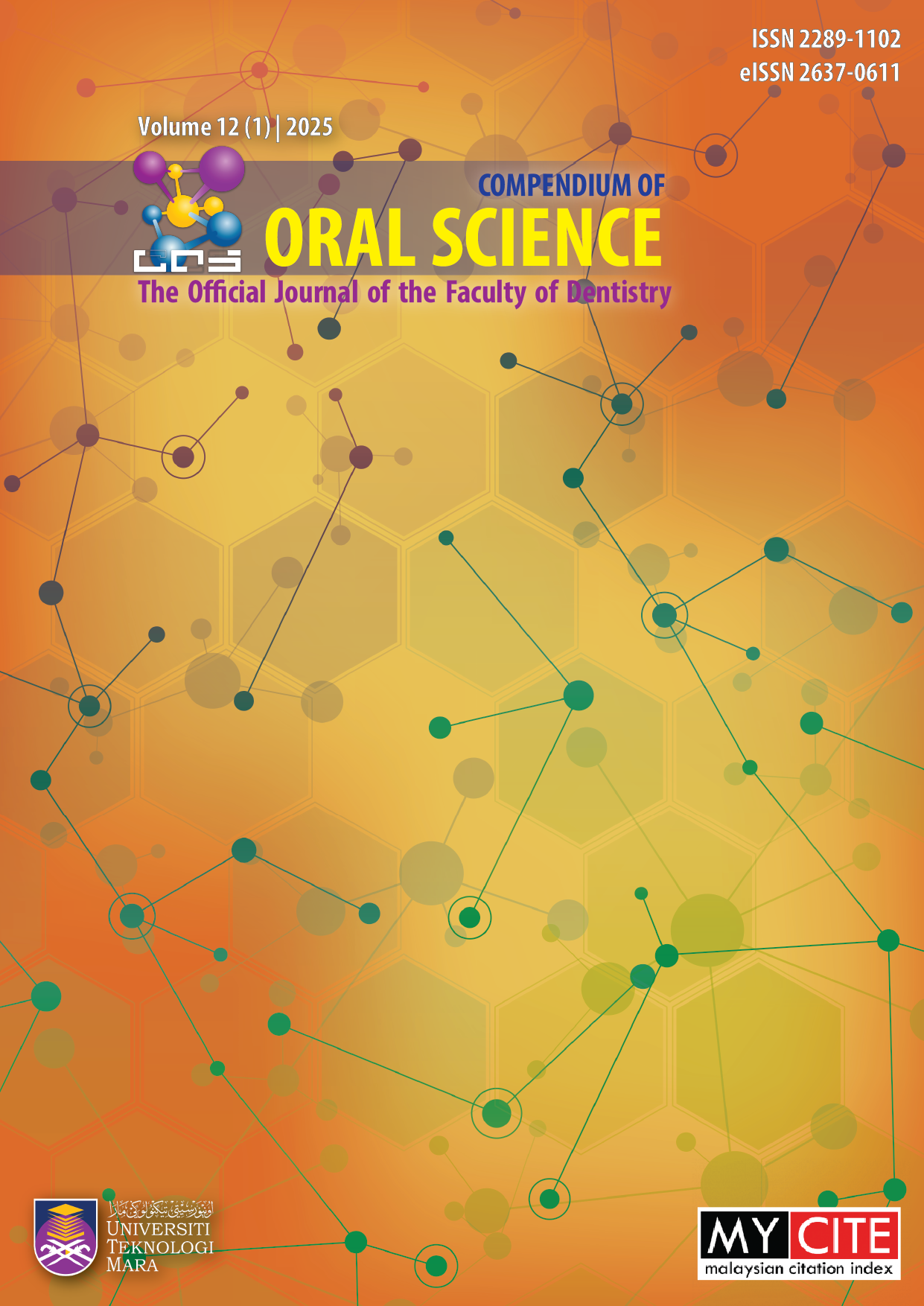Marketing Match: How Sociodemographic Influence User Acceptance of Social Marketing Appeals in Oral Health Promotion
DOI:
https://doi.org/10.24191/cos.v12i1.4375Keywords:
social marketing, user acceptance, dentistry, oral health promotionAbstract
Objective: This study aimed to evaluate how sociodemographic factors influence user acceptance of different social marketing appeals. Materials and Methods: This study was designed as a three-armed randomized controlled trial, with the non-emotional (rational) appeal serving as the control group. We utilized an adapted, translated, and validated modified Technology Acceptance Model (TAM) questionnaire consisting of 23 items on a five-point Likert scale to assess user acceptance. Participants were randomly assigned to watch one of three intervention videos on oral cancer, each featuring a distinct appeal: rational (Video 1), humor (Video 2), and fear-based messaging (Video 3). Results: A total of 322 participants viewed videos featuring rational (34.0%), humor (33.0%), and fear (33.0%) appeals. Gender distribution was 51.2% male and 48.8% female, with age groups comprising 34.2% in early adulthood, 33.8% in middle adulthood, and 32.0% in the elderly. Educational levels were evenly split between high school or below and tertiary education or higher, each at 50%. Overall, participants showed consistent positive acceptance across demographics for all videos (p > 0.05). Results indicated no significant differences in acceptance based on these factors, with all mean scores being positive: age (4.20-4.62), gender (4.31-4.45), education level (4.31-4.48), household income (4.23-4.49), smoking status (4.12-4.46), and marital status (3.87-4.55). Conclusions: The study revealed that sociodemographic factors do not significantly impact the overall acceptance of social marketing videos, suggesting the potential for generalized social marketing campaigns. Future research could delve deeper into how different demographic variables impact user acceptance in diverse health promotion media.
References
Andreasen, A. R. (2002). Marketing Social Marketing in the Social Change Marketplace. Journal of Public Policy & Marketing, 21(1), 3-13.
Andreasen, A. R. (2018). Challenges for the science and practice of social marketing. In Social Marketing (pp. 3-19). Psychology Press.
Banas, J. A., Dunbar, N., Rodriguez, D., & Liu, S.-J. (2011). A review of humor in educational settings: Four decades of research. Communication Education, 60(1), 115-144.
Daniluk, B., & Borkowska, A. (2017). Humor appreciation in elderly people and its cognitive determinants. Roczniki Psychologiczne, 20, 529-543. https://doi.org/10.18290/rpsych.2017.20.3-1en
Gonot-Schoupinsky, F. N., & Garip, G. (2018). Laughter and humour interventions for well-being in older adults: A systematic review and intervention classification. Complementary Therapies in Medicine, 38, 85-91. https://doi.org/https://doi.org/10.1016/j.ctim.2018.04.009
Gordon, R., Carrigan, M., & Hastings, G. (2011). A framework for sustainable marketing. Marketing theory, 11(2), 143-163.
Greengross, G. (2013). Humor and aging - a mini-review. Gerontology, 59(5), 448-453. https://doi.org/10.1159/000351005
Harm, J., Vieillard, S., & Didierjean, A. (2014). Using humour as an extrinsic source of emotion regulation in young and older adults. Quarterly Journal of Experimental Psychology, 67(10), 1895-1909. https://doi.org/10.1080/17470218.2013.873474
Hornik, J., Ofir, C., & Rachamim, M. (2017). Advertising appeals, moderators, and impact on persuasion: A quantitative assessment creates a hierarchy of appeals. Journal of advertising research, 57(3), 305-318.
Lee, N. R., & Kotler, P. (2011). Social marketing: Influencing behaviors for good. SAGE publications.
Leventhal, H., Phillips, L. A., & Burns, E. (2016). The Common-Sense Model of Self-Regulation (CSM): a dynamic framework for understanding illness self-management. J Behav Med, 39(6), 935-946. https://doi.org/10.1007/s10865-016-9782-2
Peattie, K., & Peattie, S. (2009). Social marketing: a pathway to consumption reduction? Journal of business Research, 62(2), 260-268.
Ruiter, R. A., Kessels, L. T., Peters, G. J. Y., & Kok, G. (2014). Sixty years of fear appeal research: Current state of the evidence. International journal of psychology, 49(2), 63-70.
Stanley, J. T., & Turner, J. R. (2021). Cross-Cultural Perspectives on Humor Appreciation and Function Across the Lifespan. In E. Vanderheiden & C.-H. Mayer (Eds.), The Palgrave Handbook of Humour Research (pp. 341-361). Springer International Publishing. https://doi.org/10.1007/978-3-030-78280-1_18
Wakefield, M. A., Loken, B., & Hornik, R. C. (2010). Use of mass media campaigns to change health behaviour. The lancet, 376(9748), 1261-1271.
Witte, K., & Allen, M. (2000). A meta-analysis of fear appeals: Implications for effective public health campaigns. Health education & behavior, 27(5), 591-615.
Yan, X. (2022). Being targeted: How counter-arguing and message relevance mediate the effects of cultural value appeals on disease prevention attitudes and behaviors. Front Psychol, 13, 1018402. https://doi.org/10.3389/fpsyg.2022.1018402
Zhang, H., Sun, J., Liu, F., & Knight, J. G. (2014). Be rational or be emotional: advertising appeals, service types, and consumer responses European Journal of Marketing, 48(11). https://doi.org/http://dx.doi.org/10.1108/EJM-10-2012-0613
Downloads
Published
How to Cite
Issue
Section
License
Copyright (c) 2025 Compendium of Oral Science

This work is licensed under a Creative Commons Attribution-NonCommercial 4.0 International License.
Materials contained in the journal may be reproduced for educational purposes provided that both the author(s) and the journal are appropriately recognised; otherwise duplication is not permitted. No articles, reports, or portions there of may be translated into other languages, published in books, journals, magazines, or any other print form without written permission from the authors and from the journal.
Disclaimer: The statements, opinions and data expressed in the articles and reports herein are those of the author(s) and not of the publisher and the editor(s). The publisher and the editor(s) disclaim responsibility for any injury to persons or property resulting from any schemes, methods, instructions or ideas referred to in the content.















